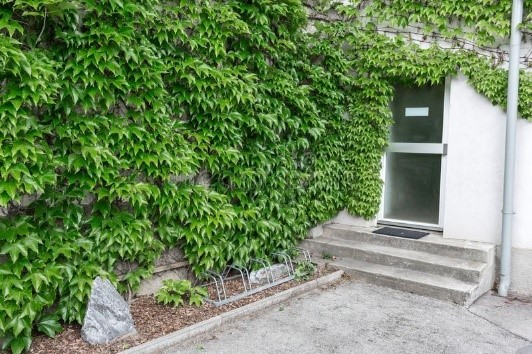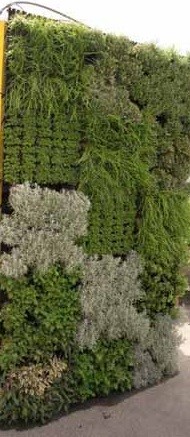We work with residents, community and faith groups, universities, schools and businesses to help make their area look nicer.
This guide has been created by residents with experience in removing graffiti, who work with us and Bristol Waste.
This guide is about graffiti applied without permission.
Graffiti is any painting, writing, marking or other defacing on a property.
This includes:
- drawings
- scribbles
- messages
- tags
A tag is a personalised signature or symbol representing the person applying the graffiti.
Graffiti can be on:
- buildings
- walls
- the street
- park furniture
- other structures
Sticker bombing is a type of graffiti, where stickers are stuck to any of the surfaces listed above.
Unwanted graffiti costs the council and the people of Bristol money.
What you can do to help
To help tackle graffiti, you can:
- remove it from your property as soon as possible
- report it to the council for removal
- report it to the police
Removing graffiti quickly (within the first 24 hours, if possible) is the best way to stop it happening again. Taggers want their tag to be seen.
Before you remove any graffiti, take a photo so you can report it.
Paint over graffiti tagging
Get permission from the owner before painting.
Masonry paint works well for painting over tags on brickwork, render, and fences.
Light colours such as white or magnolia take at least two coats to cover tags. Choose light greys, darker creams or dark colours to cover the tags with one coat.
If possible, paint a whole wall. It's best to try to make it look as though there's never been any tagging.
To clean tags off metal, paintwork, glass, Perspex, and so on, try commercial products on a very small area. Some products can be very strong and cause permanent damage. Always follow the instructions carefully.
Paint street art or a mural
You could paint some street art or a mural over the graffiti, if the site is suitable
You always need permission from the owner of the building, otherwise the street art will be classed as criminal damage and the artist could be fined or jailed.
You could involve the community in painting a mural to celebrate the community's history or its diversity.
Not everybody will want street art in their community. Try to speak with as many local people as you can before you do this. There's no guarantee that street art won't be tagged.
If you're renting, you need your landlord's permission. If you have a repairing lease, the landlord may ask you to pay for the removal or overpainting of street art at the end of the lease.
You may need planning permission in conservation areas.
Hire a specialist to help
If you need help removing difficult to reach graffiti, you can hire a specialist.
You can:
- search online for "graffiti removal Bristol"
- look on yellow pages or other directory sites, for companies that specialise in removing graffiti
- talk about the situation with Bristol Waste
You can ask us to remove graffiti. You can also report the incident to the police.
Report graffiti immediately. If graffiti is removed as quickly as possible, it can stop offenders targeting the same spot again and again. Taggers want their tag to be seen by others.
Report graffiti to the council for cleaning
Report graffiti to us on the Report graffiti page.
When asked to give details of the issue:
- tell us exactly where the graffiti is
- say if a permission form has been returned or is already on file
If you're the owner of the property, you need to give us permission to remove the graffiti:
- fill in and sign an document indemnity form for removing graffiti(61 KB)
- then scan the form and email it to streetcleansing@bristolwastecompany.co.uk, or
- post it to: Bristol Waste Company Folly Lane, off Days Road, St Philips, Bristol, BS2 0QS
If you're a council tenant, reporting graffiti on a property where you live, you can:
- report this online as a repair
- talk about it with your Housing Officer
We always try to help residents and businesses to remove graffiti free of charge. If, for any reason, we can't do this, we'll talk to you about the possible options.
There may be a charge for this service if the graffiti is large. We'll only clean the graffiti after the owner agrees to the charge.
Report graffiti to the police
Most people who graffiti or "tag" properties do it more than once. The police are building a database of graffiti and tags and their locations.
This will help the police:
- show a history of criminal behaviour
- prosecute graffiti taggers more successfully
If you see graffiti in progress, report it. Don't try to intervene.
To report graffiti to the police:
- call 999 if tagging is in progress
- call 101 if when tagging is not in progress
- use the Avon and Somerset Police Report graffiti online form
If you're using the online form to report graffiti:
- take at least two photos:
- one close up showing the graffiti clearly
- one wider angle showing the location
- note the exact location of the graffiti
- upload the photographs to the form
- you'll be emailed a crime number
Your report may give information that will help identify a tagger.
We're not responsible for cleaning all graffiti in Bristol.
Our Report graffiti page has information about who to report graffiti on the following structures:
- bus stop shelters
- telephone boxes
- billboards (advertising hoardings)
- post boxes
- railway bridges
- churches
- construction hoardings
Encourage everyone in your community to report and deal with graffiti as soon as it happens.
Contact the owner of any building that has graffiti on it. Stress the importance of a quick clean-up and offer to help.
Email the Bristol City Council Clean Streets Project Development Officer, Neil Burwell, at neil.burwell@bristol.gov.uk if you want to:
- tackle lots of graffiti in your area
- find out if there are people or groups already working to tackle graffiti in your area
- learn about training to remove graffiti safely
- find out where to get cheap or free materials such as paint and brushes
- find out if there's a team or an officer in the council or Bristol Waste that can help you organise a local group
Coordinate a graffiti awareness campaign within your immediate community:
- involve your local community publications or social media groups
- give out information about the negative effects of graffiti on a community
- advise them to remove the work quickly: graffiti taggers want their work to be seen by as many people as possible
If it's a particularly large project, Neil Burwell can advise if it would be appropriate to get help from Bristol Waste or Community Payback.
Quick removal is one of the best ways to stop future graffiti. Removing graffiti tells the people who do it that the community is cared for and their work has less chance of being seen.
Encourage community groups to look after a wall or area to keep it clean, well maintained, and graffiti free.
Use good lighting or CCTV to deter taggers.
Use anti-graffiti coating (AGC)
Anti-graffiti coating (AGC) is a coating applied to a surface to make it easier to clean.
AGC is useful for brick and stone, which often need graffiti removal products and a pressure washer to clean successfully.
AGC products are available in clear, pigmented, matt and shiny finishes.
Use anti-climb (non-drying) paint
You can buy anti-climb paint from some DIY centres and locksmiths. It's used to deter:
- climbing up rainwater pipes and other building features
- climbing over walls and roofs
You shouldn't use anti-climb paint on walls, fences or anything less than 2.4m in height, so passers-by don't damage their clothing.
You must use anti-climb paint with signs that warn of the danger due to its use. The signs should be in simple language.
Use plants to cover walls
Plant trees, shrubs, or climbing plants to cover walls. It's important to maintain plants so they don't damage walls or block pavements.
Useful websites with information about how to cover walls with plants:
Examples of plant-covered walls:

Simple plants like Ivy or Virginia Creeper hanging over a wall can give protection from tagging.

Pyracantha growing against a wall. This plant has attractive foliage and berries, and spreads well.

Modern green walling system.
Avoid step-ups
- Make sure you don't provide things that people can stand on, for example:
- trade bins
- wheelie bins
- moveable benches
Step-ups let taggers spray higher on the wall or gain higher access.
Take bins inside where possible, or secure them so they can't be used as step-ups.
